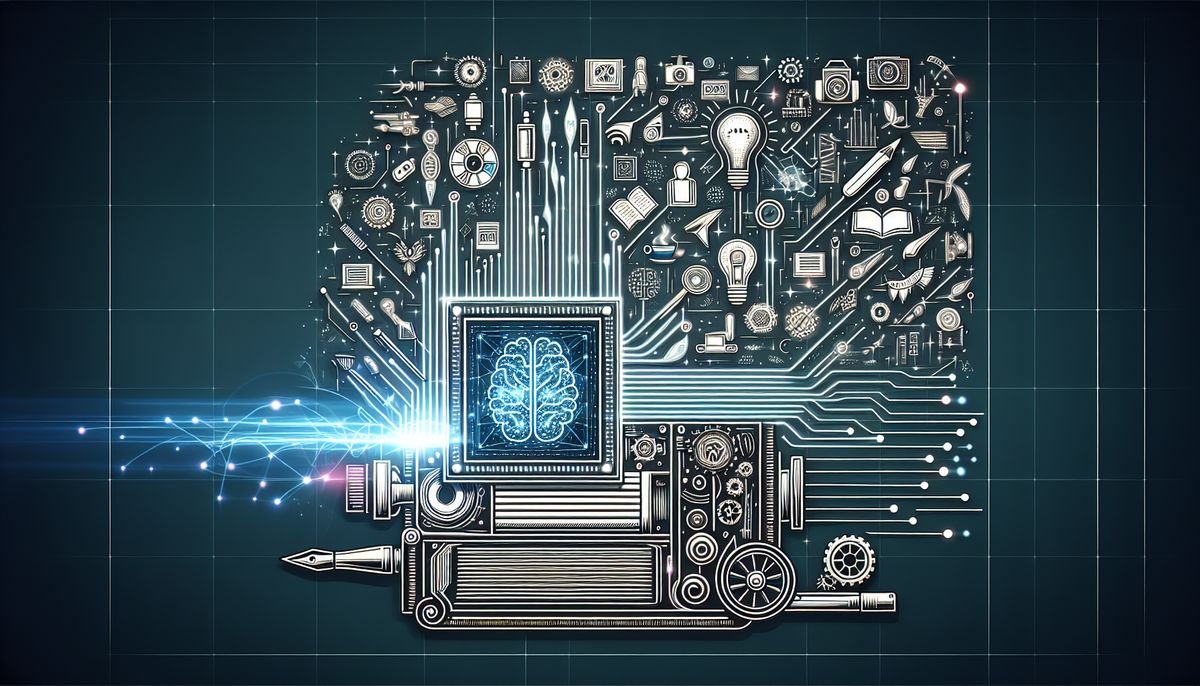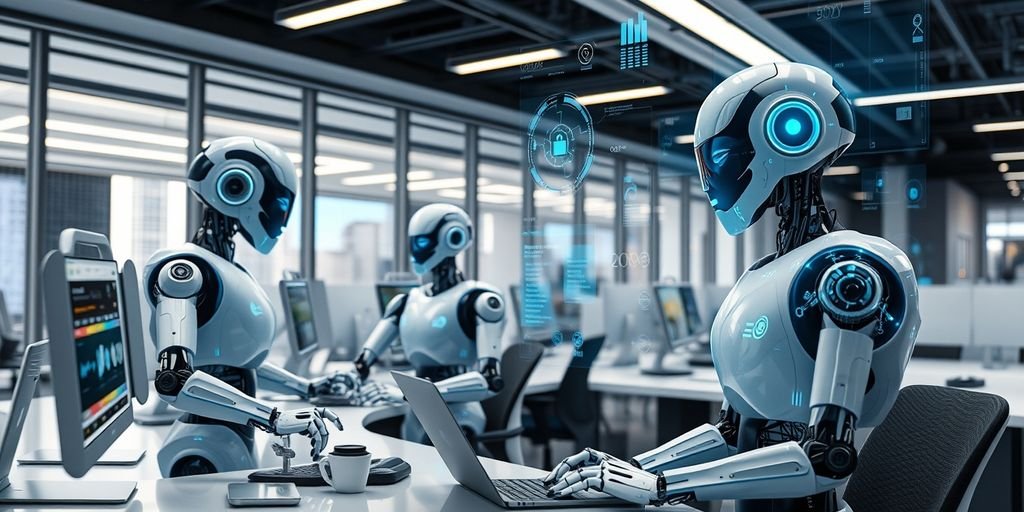The AI revolution is making waves across various sectors, and the creative industries are no exception. The emergence of AI art generators like Stable Diffusion has transformed the landscape of artistic creation, offering new tools and possibilities for artists and businesses alike. This article delves into the impact of Stable Diffusion and similar technologies on the creative process, exploring how they can be harnessed to revolutionize art and commercial projects.
Key Takeaways
- AI art generators like Stable Diffusion are changing the creative landscape by providing artists with powerful tools to generate unique and diverse artworks.
- Understanding and selecting the right AI art generator is crucial for businesses to incorporate these technologies into commercial projects effectively.
- Leveraging AI for creativity and efficiency can lead to new artistic possibilities and help businesses to stay competitive in the rapidly evolving creative industries.
Revolutionizing Art with AI Art Generators
The Emergence of AI in Creative Expression
The creative landscape is witnessing a seismic shift with the introduction of AI art generators. These tools, which harness machine learning and neural networks, are not just new paintbrushes for artists; they represent a fundamental change in the creation process itself. AI’s role in art has sparked a vibrant discussion about the nature of creativity and the definition of art.
In recent months, the conversation has been fueled by AI’s ability to generate art that resonates on a human level. Critics like Steven Pinker have noted that while some modern art may lack emotional depth, AI-generated pieces are challenging this notion, creating works that can indeed stir emotions. This debate is at the forefront of the AI art movement, as highlighted by Algography Art’s recent commentary on the subject.
To navigate this new era, artists and businesses alike are seeking to master AI art generation. Here are some steps to consider:
- Research and study examples of AI-generated art for inspiration.
- Join online communities to learn and collaborate.
- Use templates and prompts as starting points for exploration.
- Practice crafting effective prompts to guide the AI.
The potential of AI in art is boundless, offering a canvas for both technical innovation and profound artistic exploration.
As we delve deeper into the capabilities of AI, it’s crucial to remain mindful of the ethical implications that accompany this technology. The balance between innovation and integrity will shape the future of AI in creative industries.
Understanding the Mechanics of AI-Driven Art
At the core of AI-driven art is the interplay between two main components: the generator and the discriminator. The generator creates random data, such as an image, and presents it to the discriminator. The discriminator’s role is to guess whether the image is real or fake. This process is iterative, with the generator continuously refining its output based on the feedback from the discriminator until the art produced is indistinguishable from human-created art.
To master AI art generation, it’s crucial to grasp the underlying mechanics. By understanding how the generator and discriminator function, artists can better manipulate the AI to produce desired outcomes.
Selecting the right prompts is essential for effective AI art generation. Here are some tips to improve the quality of AI-generated images:
- Be specific with your prompts, adding relevant details.
- Keep prompts short and precise.
- Study examples of AI-generated art for inspiration.
- Use templates and prompts as a starting point and adapt them.
- Join online communities to learn and collaborate.
As AI art generators become more sophisticated, the possibilities for creative expression expand. However, it’s important to remain mindful of the ethical implications of this technology.
The Artistic Possibilities with AI Generators
The advent of AI art generators has opened a new chapter in the realm of creative industries, particularly in visual arts. Artists now have at their disposal a powerful tool that can transform the seed of an idea into a visual masterpiece. This transformation is not just about efficiency; it’s about the expansion of the artist’s creative horizon.
AI generators are not just limited to static images. Recent trends have seen these tools being used to create dynamic visuals and even assist in music video production. The following list highlights some of the key areas where AI art generators are making an impact:
- Concept art creation for games and movies
- Generating unique patterns for fashion and textile design
- Assisting in storyboard development for film and advertising
- Producing intricate designs for jewelry and other crafts
The use of AI in these domains is not just a novelty; it’s becoming an integral part of the creative process, enabling artists to explore avenues that were previously inaccessible due to technical or time constraints.
The conversation around AI in art often revolves around the notion of authorship and the role of the artist. Some artists embrace AI as a tool that expands their creative possibilities and challenges traditional notions of authorship. They see AI as a collaborator, a digital muse that can bring a new dimension to their work.
Mastering AI Art Generation for Your Business
Selecting the Right AI Art Generator
With the proliferation of AI art generators, selecting the right one for your business can be a daunting task. The key is to identify tools that not only align with your creative vision but also integrate seamlessly into your workflow. Recent trends have seen a surge in the use of AI art generators for commercial projects, making the choice of platform more critical than ever.
When evaluating AI art generators, consider the following factors:
- User interface and ease of use
- Customization capabilities
- Range of styles and themes
- Output quality and resolution
- Export options and formats
It’s essential to choose an AI art generator that offers the flexibility and quality demanded by professional standards.
For instance, the latest review by Semrush titled "The Top 5 AI Image Generators You Should Try in 2024" provides a comprehensive analysis of the top tools in the market. This can serve as a valuable starting point for businesses looking to adopt AI art generation. Here’s a snapshot of the types of AI art generators you might consider:
- Stable Diffusion: Known for its versatility in image generation
- Midjourney: Offers unique stylistic interpretations
- DALL-E: Excels in creating surreal and imaginative visuals
- HypoArt: Specializes in hyper-realistic outputs
- Artbreeder: Allows for extensive image manipulation and breeding
Incorporating AI Art into Commercial Projects
The integration of AI-generated art into commercial ventures is a burgeoning trend that offers a new realm of possibilities for businesses. By utilizing AI art generators, companies can produce a vast array of visual content, from advertising graphics to product designs, with unprecedented speed and variety.
To effectively harness AI art for commercial use, it’s essential to follow a structured approach:
- Pick your preferred AI model, style, or theme.
- Enter your text prompt or phrases.
- Edit or fine-tune the generated artwork to align with your brand identity.
Embracing AI art requires a balance between automation and human creativity, ensuring that the final product resonates with your target audience while maintaining a unique brand aesthetic.
Ethical considerations must also be at the forefront when incorporating AI art into commercial projects. It’s crucial to navigate copyright and plagiarism concerns responsibly, ensuring that AI-generated artwork is used in a way that respects original creators and upholds industry standards.
Leveraging AI for Enhanced Creativity and Efficiency
The AI revolution has ushered in a new era of creative potential, particularly within the realm of art and design. AI tools have become indispensable collaborators, not only streamlining the creative process but also amplifying human creativity and productivity. The recent trend of enhancing AI-generated artwork showcases the symbiotic relationship between artists and AI, where technology serves as both a muse and an assistant.
To truly harness the power of AI for creativity, it’s essential to explore various techniques and tools that can refine AI-generated artwork. This involves:
- Experimenting with different AI models and algorithms to discover those that align with the artist’s vision.
- Adjusting generation settings and possibly training custom AI models to achieve greater diversity and quality in the output.
- Using AI-generated images as a foundation for further artistic development, thus saving time and fostering initial ideas that can be elaborated upon.
The benefits of AI art generators extend beyond mere efficiency; they open up a world of experimentation and exploration, enabling artists to push the boundaries of traditional art forms.
By selecting the right prompts and fine-tuning the AI’s parameters, artists can master the art of AI generation, leading to a significant impact on creative industries. This impact is not just about producing art faster; it’s about redefining the creative landscape and unlocking new possibilities for artistic expression.
Embracing the Future: The Transformative Power of AI in Art
The advent of AI art generators like Stable Diffusion, Midjourney, and DALL-E marks a significant milestone in the creative industries. These tools offer artists unprecedented capabilities to experiment with styles, techniques, and visual expressions, effectively democratizing the art creation process. As we navigate the AI revolution, it’s clear that these technologies are not just tools but collaborators that expand the horizons of creativity. By leveraging the power of AI, artists can push beyond traditional boundaries and explore new artistic realms. The future of art is being reshaped by AI, and embracing these changes will be crucial for artists and creative professionals seeking to remain at the forefront of innovation.
Frequently Asked Questions
What is Stable Diffusion and how can it impact my creative business?
Stable Diffusion is an AI art generator that uses machine learning to create images from textual prompts. It can impact your creative business by providing a tool for rapid prototyping, generating unique visual content, and offering inspiration for new designs. By inputting specific prompts, you can receive images that align with your artistic vision, which can be used in commercial projects, marketing materials, or as part of your creative process.
How do AI art generators like Midjourney and DALL-E differ from each other?
AI art generators like Midjourney and DALL-E each have their own unique algorithms and capabilities. Midjourney is known for its advanced features like controlling frame shapes and fixing specific elements, while DALL-E, developed by OpenAI, is celebrated for generating highly detailed images based on textual prompts. Choosing between them depends on the specific needs and desired outcomes of your project.
Where can I find resources to master AI art generation techniques?
Resources for mastering AI art generation techniques can be found on platforms like Toolify AI, which offers articles and tutorials on using AI art generators. Additionally, online communities, social media groups, and courses dedicated to AI art generation provide opportunities to learn, collaborate, and refine your skills. These resources can help you overcome common hurdles and explore the full potential of AI in art creation.



